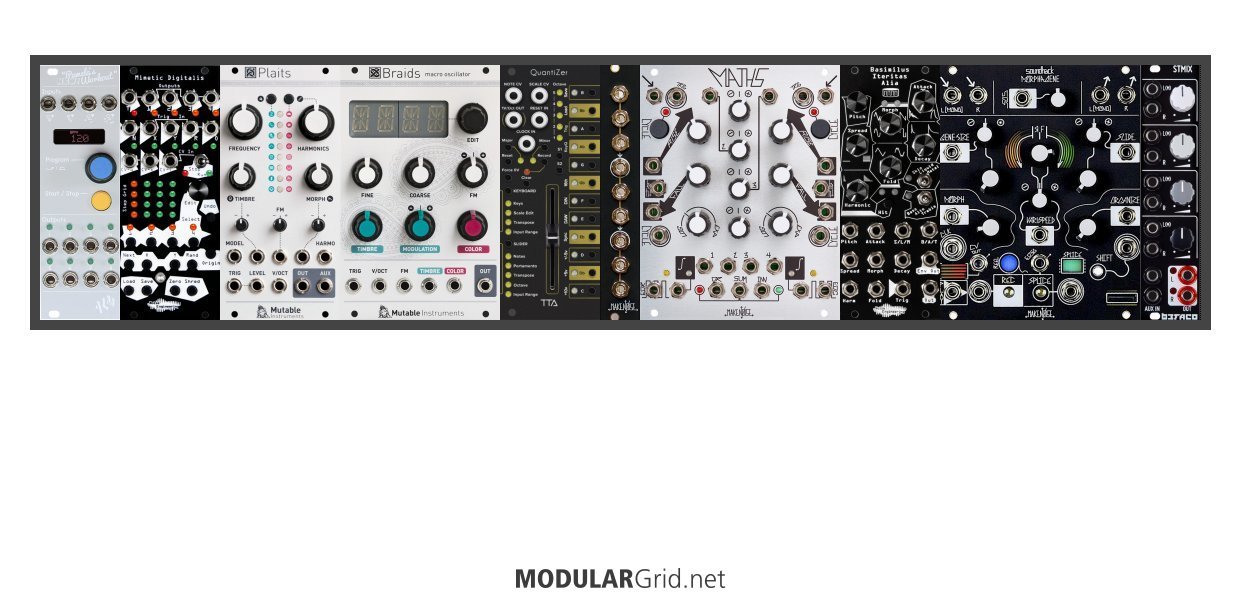Too many voices in a small space without enough modulation and utilities.
I've lost count of the number of times I've written that exact sentance... it's a very common newbie miustake... wanting lots of voices without a clue of the difference between a vco and a voice...
Think of how many different things are on the MS20 just to make that one voice (for the most part) feel alive and musical - envelopes, an LFO, two filters, sample and hold, "ring mod", and the external signal processor, plus a pitch wheel thingy. That's the sort of approach you want to take to modular if you want to get more out of it than you would just with complete synths and pedals.
indeed - probably a good idea to change "complete synths" in the last line to "incredibly basic synths"
start with a single voice... get the modules you need to support that voice...
if you think you'll want more than 1 start with a bigger case - a tiptop mantis is a good sized starter case - suitable for 2-3 voices... and when you choose things like modulation or vcas - buy quads - unless you have very very good reasons to buy fewer
Maths can do a lot of things, but not all at once, and certainly not enough for all these.
but it is an incredibly useful & versatile module... & something you can grow into - see the "maths illustrated supplement" for more details...
Pam's is also very powerful, but you don't want to rely on it for basic modulation, and it isn't very hands-on. None of these modules are necessarily bad,
in fact quite the opposite - all the modules are great, but not neccessarilt together in a small starter rack
plus read the manuals properly - Pams can be used as a quantizer - so no need for a separate one - plus nowadays I'd buy the pro pams and not the older "new"
but you should probably use this much space to make one or two excellent, super-flexible voices rather than 4 with what is probably slightly under the bare minimum of support.
more like 1...
Watch videos about complete modular systems, like the Make Noise Shared System/Tape and Microsound systems, or even do a bit of research on the suggested systems from Buchla (careful not to get sucked into that, though, because, while Buchla stuff is awesome, it makes Eurorack look like smart financial planning). Semi-modular synths as well. Get a sense of what people are using and calling "complete instruments" and why designers and users feel that way. It will help you design your system's vital plumbing in an informed way and make these modules feel and sound more like yours.
-- Zacksname
also take a look at my signature and have a good long think about it.... it's a simple formula for getting most versatility in patching for the least outlay (& scales from the smallest to the biggest systems)
a good starting point for a modular is:
a sound source, a sound modifier, a modulation source, a way to play and a way to listen (a quad vcdascading vca will work and is a good investment) plus if possible a few utilities
"some of the best base-level info to remember can be found in Jim's sigfile" @Lugia
Utility modules are the dull polish that makes the shiny modules actually shine!!!
sound sources < sound modifiers < modulation sources < utilities


